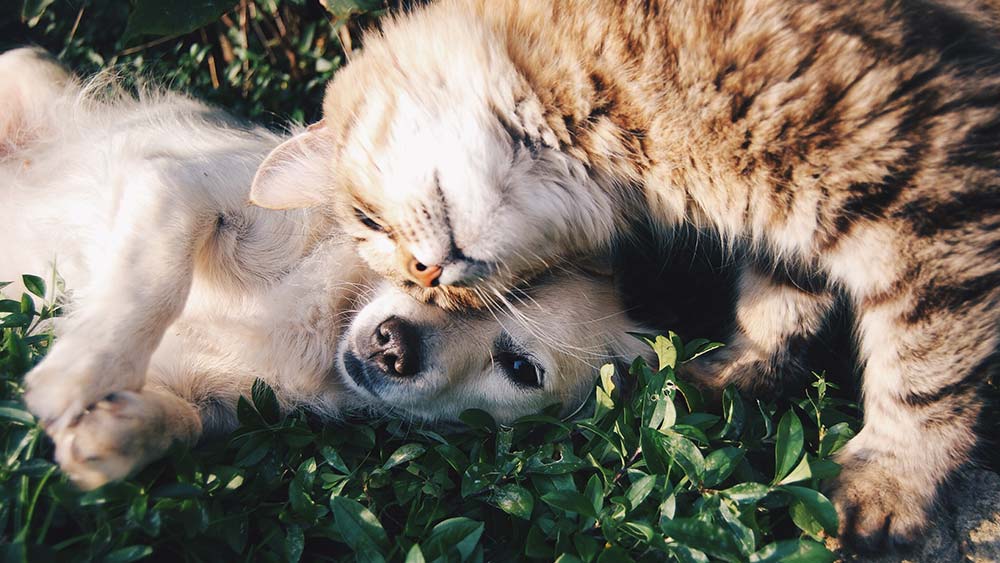Diabetes mellitus is a common endocrine pancreatic disorder of cats and dogs. The incidence of diabetes in cats and dogs is reported to be anywhere from one in 100 to one in 500 pets.
Diabetes is classified as type I or type II. Type I diabetes is also called insulin-dependent diabetes. In this disorder, there is destruction of the beta cells (insulin-producing cells) of the pancreas. Treatment involves replacing insulin through insulin injections given one to two times per day.
Type II diabetes is also called non-insulin dependent diabetes, as insulin is usually not required for treating pets with this disorder. Insulin resistance and dysfunction of beta cells, rather than permanent destruction of beta cells, are seen in pets with type II diabetes.
Type I diabetes is the most common type. Most (if not all) dogs with diabetes have type I diabetes; approximately 50 to 70 percent of cats have type I diabetes, with the remainder having type II diabetes.
Causes of type I diabetes include immune mediated destruction of the beta cells of the pancreas in dogs and amyloidosis (deposition of amyloid protein in the pancreas) in cats. Other causes of diabetes in dogs and cats include obesity (probably the most common cause of type II diabetes in cats), genetics, infection, pancreatitis, and administration of certain medications (corticosteroids, progesterone compounds).
Principal Natural Treatments
Treatments for pets with diabetes include: natural diet/high-fiber diet/low carb (the so-called meat and vegetables diet), exercise, glandular therapy, chromium, and vanadium.
Natural Diet
Dietary therapy is useful in both dogs and cats with diabetes. Most diabetic dogs require insulin as they have type I diabetes (insulin-dependent diabetes). Many cats may not require insulin, as they have type II diabetes (non-insulin-dependent diabetes). These cats are most likely to respond to therapies that may include dietary therapy, nutritional supplementation, and exercise.
While not proven, some holistic veterinarians believe that years of feeding corn-based foods to cats (which amount to feeding a high-carbohydrate food to a true carnivore, which is not natural) may be contributing to the high incidence of diabetes in cats.
The homemade diet recommended for dogs with diabetes is composed of 50 to 55 percent high-quality complex carbohydrates (oats, vegetables, potato—with no simple sugars such as sucrose, which may be included in commercial processed diets, especially soft-moist foods). Fat is restricted (no more that 20 percent), and moderate amounts of protein (15 to 30 percent) are included.
Diets high in complex carbohydrates (fibers) allow slower digestion and absorption of carbohydrates, which helps prevent wide fluctuations in blood glucose levels by minimizing postprandial glucose concentrations (postprandial refers to the period after a meal is eaten when blood glucose is most likely to spike to a high level, usually within one to four hours after eating.) High complex carbohydrate diets also appear to increase the sensitivity of the cells of the body to insulin, which can improve blood sugar regulation. Carbohydrates such as vegetables, oats and potatoes are more slowly digested and adsorbed than rice and are preferred sources of carbohydrates for inclusion in the diets of diabetic dogs.
Soluble and insoluble fibers are carbohydrates commonly included in diets for dogs with diabetes. Soluble fibers (such as guar gum, which can be sprinkled on food at 8 gm/400 kcal of food) reduce blood sugar levels by absorbing water and forming gels that slow movement of food from the stomach, reduce absorbing of glucose, and increase the passage of food throughout the intestinal tract, which serves to slow glucose absorption. Insoluble fibers (such as wheat bran added to the diet at 8 gm/400 kcal of food) have similar effects. Pumpkin, squashes, and similar vegetables can be used to add fiber to pet diets. Products such as sugar-free Metamucil can also be added to the pet’s diet to provide additional fiber.
Dogs and cats with diabetes that are thin should not be fed high-fiber diets initially as they may continue to lose weight. These pets should be fed wholesome maintenance diets with small amounts of fiber added slowly once normalization of weight is achieved.
Diet for Dogs with Diabetes
Before you start to feed your dog or cat a home-prepared diet, it is strongly recommended that you discuss your decision with your veterinarian or a holistic veterinarian in your area. It is essential you follow any diet’s recommendations closely, including all ingredients and supplements. Failure to do so may results in serious heath consequences for your pet.
This diet provides 452 kcal, 24.5 gm protein, 8.9 gm fat, and supports the daily caloric needs of a 12- to 13-pound dog.
- 1 1/4 cups oatmeal or rolled oats, cooked
- 3 1/2 ounces (1/4 cup) kidney beans
- 1 large hard-boiled egg
- 1 cup mixed vegetables, cooked and drained
Variations
1. Substitute 1/3 pound chicken or turkey breast and two cups of potato cooked with the skin on for the rolled oats and kidney beans. If this substitution is made, also add 30 gm (one ounce) of wheat bran to the diet.
2. Add 1 1/2 to 2 bonemeal tablets (10-grain or equivalent) or 1/2 teaspoon of bonemeal powder to supply calcium and phosphorus with a multivitamin/mineral supplement, using the label instructions. Alternatively, use a natural product from Standard Process (One Calcifood Wafer or Calcium Lactate tablets for each two bonemeal tablets).
3. When possible, use natural vitamins made from raw whole foods, rather than synthetic vitamins (although both can be used in combination), as the natural vitamins also supply plant phytochemicals, enzymes, and other nutrients not found in chemically synthesized vitamins.
4. Use either Catalyn from Standard Process (at a dose of one Catalyn per 25 pounds) or Canine Plus from VetriScience (following label dosages) as the natural vitamin in this recipe.
Diet for Cats with Diabetes
Most doctors also recommend similar diets for diabetic cats. However, cats are true carnivores and require meat in their diets. Therefore, the diet that may prove most helpful for diabetic cats uses the maintenance diet with added fiber. However, keep in mind that cats will usually not accept diets high in fiber.
- 1/3 to–1/2 pound of ground meat (turkey, chicken, lamb, beef)
- 1/2 to 1 large hard-boiled egg
- 1/2 ounce of clams chopped in juice
- 4 teaspoon potassium chloride (salt substitute)
- 100 mg taurine
If using 1/2 pound of chicken and 1/2 egg, the diet will provide 471 kcal, 53.1 gm of protein, and 27.4 gm of fat. An adult indoor 10-pound cat requires approximately 300 kcal of energy per day, an adult outdoor 10-pound cat requires approximated 360 kcal of energy per day, and a five-pound kitten requires approximately 300 kcal of energy per day.
Variations
1. Substitute tuna (four ounces in water without salt), sardines (four to six ounces in tomato sauce), or other fish (such as five ounces of salmon) for the meat protein, and for occasional variety, substituted 1/2 to 2/3 cup of tofu. Since cats are true carnivores, more doctors prefer to recommend tofu on only an occasional basis.
2. Add 1/3 cup of potato (cooked with the skin), rice, or macaroni, although cats do not have a defined dietary requirement for carbohydrates.
3. Supply vitamins and minerals as follows. Three to four bonemeal tablets (10-grain or equivalent) or 3/4 to 1 teaspoon of bonemeal powder to supply calcium and phosphorus with multivitamin/mineral supplements, using the label instructions. Alternatively, use a natural product form Standard Process (one Calcifood Wafer or two Calcium Lactate tablets for each two bonemeal tablets).
4. When possible, add natural vitamins made from raw whole foods, rather than synthetic vitamins (although both can be used in combination), as the natural vitamins also supply plant phytochemicals, enzymes, and other nutrients not found in chemically-synthesized vitamins. Use either Catalyn from Standard Process (at a dose of one Catalyn per 10 pounds) or NuCat from VetriScience (following label dosages) as the natural vitamin in this recipe.
5. For extra nutrition and variety, use fresh, raw or slightly steamed vegetables, such as carrots or broccoli (approximately 1/3 to 1 cup per recipe) as a top dressing for the diet. (Many cats, however, will not eat vegetables. Most vegetables provide approximately 25 kcal per 1/2 cup.
6. The nutrient composition of the diet will vary depending upon which ingredients are used. The actual amount to feed your cat will vary based upon the pet’s weight, (feed less if weight gain, more if weight loss.)
7. Extra fiber can be added by supplementing with kidney beans (1/8 cup), oatmeal (1/4 cup), wheat bran (1/4 ounce), pumpkin or squashes, and sugar-free fiber products such as Metamucil.
Chromium
Chromium is a trace mineral in the body. Chromium’s role in maintaining good health was discovered in 1957, when scientist extracted a substance known as glucose tolerance factor (GTF) from pork kidney. GTF, which helps the body maintain normal blood sugar levels, contains chromium as the active component. GTF binds to and potentials the activity of insulin.
Chromium is necessary for pancreatic beta cell sensitivity (beta cells make insulin), insulin binding, insulin receptor enzymes, and insulin receptor sites. Supplemental chromium tends to balance glucose metabolism, benefiting both hypoglycemic (low blood sugar) and diabetic patients. One explanation for this is that chromium may improve C-peptide levels, leading to enhanced pancreatic beta cell function.
Supplementing with chromium can lower blood lipids, which may make it beneficial in people and pets with elevated blood cholesterol levels.
Chromium’s most important function is to help regulate the amount of glucose in the blood. Insulin regulates the movement of glucose out of the blood and into cells. It appears that insulin uses chromium as a co-factor to allow glucose to pass through the cell membrane and enter the cell.
Based on chromium’s close relationship with insulin, this trace mineral has been studied as a treatment for diabetes. The results have been positive. Chromium supplements appear to improve blood sugar control in people with diabetes.
Chromium has principally been studied for its possible benefits in improving blood sugar control in people with diabetes. Reasonably good evidence suggests that people with adult-onset (type II) diabetes may show some improvement when given appropriate dosages of chromium. Individuals with childhood-onset (type 1) diabetes may respond well. Finally chromium also appears to help treat problems with blood sugar control that are too mild to deserve the name diabetes. Putting all the results together, it does appear chromium supplementation can be helpful in treating diabetes; both type I and type II. However, more work needs to be done to determine the optimum dosage.
Tissue levels of chromium in people and pets are often low due to limited uptake of chromium by plants as well as limited absorption by people and pets.
As mentioned, it has been theorized that many Americans may be chromium-deficient.
Preliminary research done by the U.S. Department of Agriculture (USDA) in 1985 found low chromium intakes in a small group of people studied. Although large-scale studies are needed to show whether Americans as a whole are chromium-deficient, we do know that many traditional sources of chromium, such as wheat, are depleted of this important mineral during processing. Some researchers believe inadequate intake of chromium may be one of the causes for the rising rates of adult-onset diabetes. However, the matter is greatly complicated by the fact we lack a good test to determine chromium deficiency.
While chromium is found in drinking water, especially hard water, concentrations vary so widely throughout the world that drinking water is not a reliable source. The most concentrated sources of chromium are brewer’s yeast, not nutritional or torula yeast, and calf liver?—?two ounces of brewer’s yeast or four ounces of calf liver supply between 50 and 60 mcg chromium. Other good sources of chromium are whole wheat bread, wheat bran, and rye bread. Potatoes, wheat germ, green pepper, and apples offer modest amounts of chromium.
Calcium carbonate interferes with the absorption of chromium.
People may have a difficult time absorbing and synthesizing chromium if it is not attached to a substrate such as picolinic acid (chromium picolinate) or nicotinic acid (chromium nicotinate). In people, concerns have been raised over the use of picolinate form of chromium in individuals suffering from affective or psychotic disorders, because picolinic acids can change levels of neurotransmitters.
Safety Issues
Recently, there has been the suggestion that chromium picolinate may cause damage to DNA, especially when combined with ascorbic acid. Alternative forms of chromium, such as that in the CTF form, which can be extracted from foods such as yeast, contain no picolinic acid and may be safer. Additionally, while there are many forms of chromium available for supplementation, supplementations with an organic form (such as GFT) is recommended as this organically bound form of chromium is absorbed better and is more available to the pet than inorganic forms of chromium. More research is needed on this topic, although the use of the GTF form may be preferred until results are in.
Chromium appears to be safe in people when taken at a dosage of 50 to 200 mcg daily. However, concern has been expressed since chromium is a heavy metal and might conceivably build up and cause problems if taken in excess. Recently, there have been a few reports of kidney damage in people who took a relatively high dosage of chromium. 1,200 mcg or more daily for several months. For this reason, the dosage found most effective for individual with type II diabetes—1,000 mcg daily—might present some health risks. Similar concerns are probably applicable for pets.
For pets with diabetes that may respond to chromium supplementation, a decreased dosage of insulin may be needed; medical supervision is essential before decreasing insulin.
The recommended dosages for the use of chromium in pets with diabetes are 50 to 300 mcg per day. Typically, a dosage of 200 mcg/cat of chromium picolinate is recommended. However, since picolinate may cause damage to DNA, more research is needed in this area. Using the chromium GFT natural supplement would be a safer alternative, although research using this form to determine the proper dosage has not been done. Work with your veterinarian to determine whether chromium supplementation can be used with your pet. And remember calcium carbonate supplements may interfere with the absorption of chromium.











